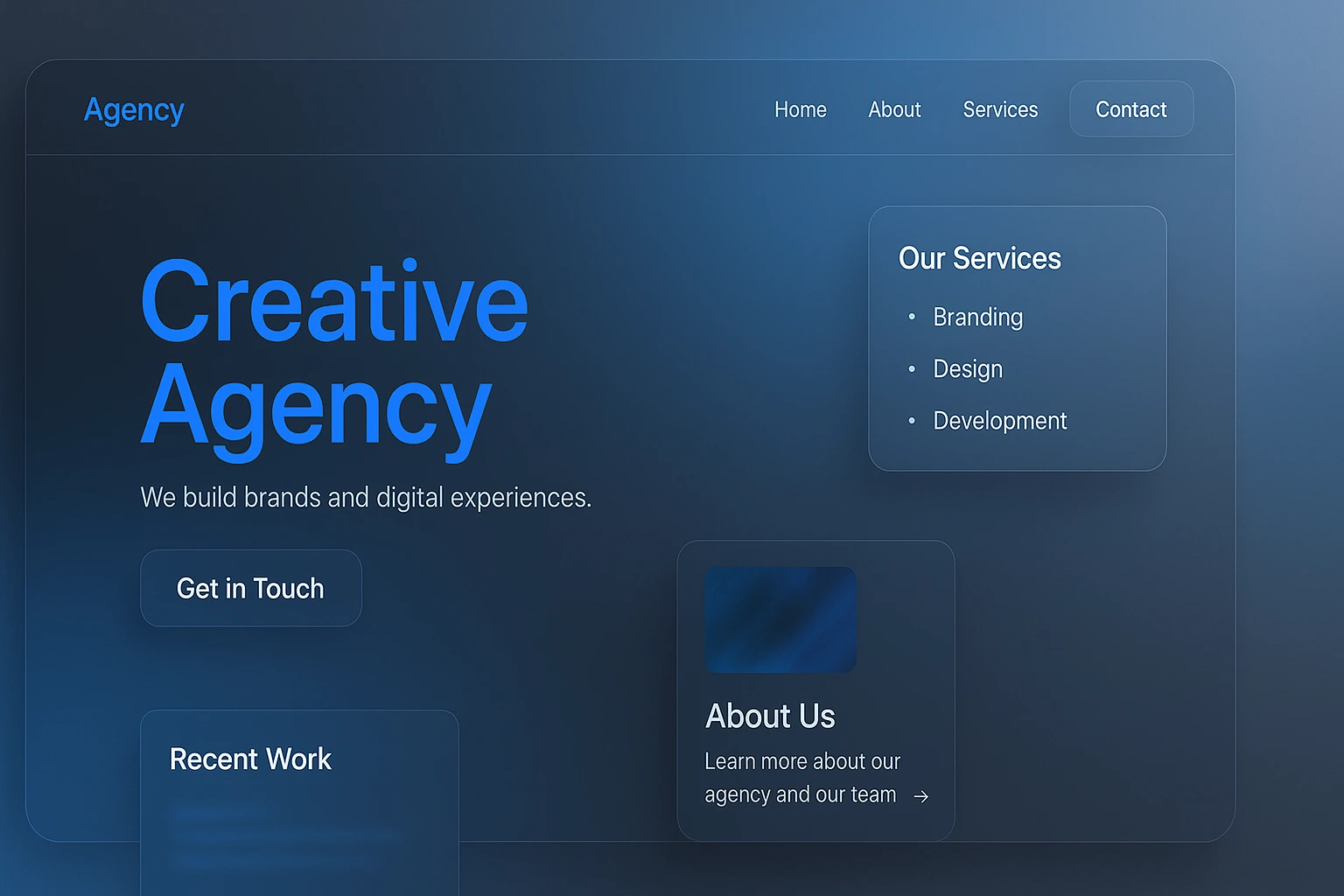What Your Website Says About Your Brand: A Closer Look

The road to a successful online business starts with branding. Your brand shapes how people perceive your value, your voice, and your authority. Yet many still view branding as just logos and colors. When in fact, your website forms the core of how that brand comes to life.
Yes. Your site becomes the first real test of your brand’s clarity. That’s why website designing and development are covered as a second step of branding and if it isn’t, then things go wrong.
A sharp brand message paired with a poorly built site creates a disconnect that users feel instantly. Even Google recognises the gap. Sites with weak UI, poor UX, or unstable development lose visibility before they gain traffic. Then no matter if you run paid campaigns—because no one converts on a site that doesn’t work, doesn’t guide, or doesn’t build trust.
So, let us show you how your website reflects your brand in action—and how thoughtful design, clean structure, and strong performance turn first impressions into conversions.
So, What Does Your Visitors Perceive from Your Website About Your Brand?
No matter if your website offers a service, a product, or a platform. The moment a visitor lands on it, their mind starts scanning for answers—often before they even know it. They expect clarity. They expect structure. And above all, they expect the experience to feel seamless.
That first impression doesn’t really start with your content. It begins with how fast the site loads, how the homepage is structured, and what catches the eye above the fold. If it opens cleanly, if the navigation feels obvious, if the visual tone matches what they hoped to find—that’s the moment trust begins.
Now let’s see through that journey from their point of view.
They scroll through the hero section looking for a reason to stay. If the headline speaks directly to their needs, the visuals feel relevant, and the interface invites them in—they move forward. But if the layout feels crowded, the buttons don’t respond, or key information sits buried in a drop-down—doubt creeps in. That doubt costs you time, clicks, and conversions.
Next, they explore. Maybe they click on “features,” “services,” or “shop.” They look for social proof, pricing, or next steps. The structure of that experience tells them something important—whether or not your brand understands how to guide, not confuse. If animations lag, pages break, or menus lead to dead ends, the journey stops there.
Users don’t stay patient and certainly won’t refresh. They’ll leave with a quiet assumption: if the website lacks focus, the business likely does too.
But if each step flows smoothly—if the interface adapts to mobile, if calls-to-action are visible without noise, if content loads quickly—they feel confidence growing. Not because you said you were credible, but because the experience proved it.
Design frames the story. Development delivers the logic. Optimization ensures it performs under pressure.
So? A strong brand guides better and the website is where that guidance either takes shape or falls apart.
Website Red Flags That Hurt Your Brand
- Generic templates with no brand
personality
- Inconsistent tone of voice across
pages
- Outdated design elements (fonts, colors,
layout)
- Poor mobile responsiveness or broken
mobile layouts
- Slow loading times and heavy image
files
- Confusing navigation or too many CTAs on
one page
- Lack of clear value proposition above the
fold
- DNS lookup errors or mismatched IP
location
- No SSL certificate or visible security
indicators
- Missing contact details or broken contact
forms
- Dead links or 404 errors
- Outdated blog posts or inactive news
sections
- Overuse of stock imagery or low-quality
visuals
- Content with grammatical errors or
AI-generic tone
- No social proof (e.g., testimonials, case
studies, client logos)
- Inconsistent branding between website and
social media
- No visible privacy policy or cookie
consent
- DIY-style visuals that conflict with
premium positioning
- Lack of analytics or conversion tracking setup
How Website Design Anchors Brand Identity?
Website design frames how people perceive your brand. Every layout choice, colour, font, and margin tells a story. That story begins before a single word gets read.
Let’s suppose you land on a site with stretched logos, clashing colours, broken menus, and random fonts. What would be your first reaction? You’d hesitate. You’d question the brand’s credibility. That single moment shows how powerful design becomes—it shapes trust before content even begins.
Clear, cohesive design reflects a confident brand. Sharp structure, consistent visuals, and thoughtful spacing signal control, care, and intention. See, these cues build emotional alignment with the visitor.
Leading brands anchor their identity through intentional design. Apple uses clean layouts, generous whitespace, and crisp typography to convey precision and simplicity. Airbnb combines human imagery, soft tones, and rounded fonts to project warmth and inclusivity. Nike applies bold visuals, strong contrast, and movement to reflect energy, ambition, and action. All these choices are never accidental—they support the brand’s core message in every scroll.
Every design element supports your market position. Premium brands lean on refined minimalism. Challenger brands push contrast and movement. A site without that alignment looks directionless, even if the offer holds value.
It’s also worth noting that visual consistency builds memory. Repeated styles and smart layout flow help people remember your brand. According to Lucidpress, as highlighted by Forbes, consistent brand visuals can increase revenue by up to 23%.
So, it is now clear that website design defines how the business is understood. Visitors feel the brand before they read the offer and such an emotional signal determines whether they stay, trust, or walk away.
Why Website Development Influences Brand Trust?
Even when the design feels polished, weak development breaks the experience. A site might look sharp on first glance—but once a page stutters, a form fails, or the layout collapses on mobile, the illusion fades. Visitors stop trusting what they see the moment the structure behind it falters.
Development turns visual promise into real interaction. It controls how fast the site loads, how smooth the navigation feels, and how reliable each element performs. Without that foundation, even the strongest design loses credibility.
Here are the core development factors that influence brand trust—and what each one signals to the visitor:
- Speed and Load
Time
Fast-loading sites feel modern, efficient, and intentional. Delays suggest disorganization and cause users to bounce early and Google research (via Think With Google) shows 53% of mobile users abandon sites that take more than 3 seconds to load.
- Mobile
Responsiveness
A seamless experience across phones and tablets shows adaptability and attention to detail. Glitches or broken layouts create doubt about the brand’s readiness to serve.
- Secure Architecture (SSL,
HTTPS)
Encryption and visible security cues show that user privacy matters. If you miss these details, it undermines trust, especially during transactions.
- Functional Forms and
CTAs
Working buttons, reliable forms, and smooth navigation prove that the site is built with purpose. Failures here reflect carelessness or neglect.
- Server and DNS
Configuration
Clean DNS records and expected IP location signal legitimacy. Unfortunately, unexpected server regions or failed DNS lookups can trigger skepticism or suggest operational disconnect.
- Error Handling and
Uptime
Sites that rarely break and handle downtime with clarity show maturity. Frequent errors or broken links reduce confidence and hurt return visits.
- Accessibility and Browser
Compatibility
A site that adapts across browsers, screen sizes, and assistive tools reflects inclusivity. But a lack of compatibility sends a message that not all users matter equally.
How to Rebuild Your Site from Brand Strategy Up?
So, it is now quite clear that your business website showcases your brand and builds perception with every scroll. But you can not build a high-performing site without brand clarity at the core. Visuals, structure, and content must follow a defined identity.
Therefore, you must start with a proper strategy, let your brand lead, and then build your website with purpose. In short, you need to:
- Define your brand’s market position and
tone of presence.
- Identify exactly who the website needs to
reach and convert.
- Lock in your messaging style, value
promise, and content direction.
- Audit your fonts, colours, and imagery to
reflect your current identity.
- Set specific goals for each page—lead
capture, sales, or education.
- Build the content structure around user
actions and search intent.
- Choose tools and platforms that support
long-term flexibility.
- Review every page for consistency with brand values and voice.
Final Words
So, what your website says about your brand is this—how you show up is how you're remembered. Every scroll, click, and second tells visitors you lead with clarity, intent, and focus.
Strong design signals confidence. Clean development signals control. Clear structure signals value. Every visual and functional choice reflects how your brand thinks, operates, and delivers. After all, a high-performing website reflects priority, purpose, and professionalism. It shows what matters, how you lead, and why your audience should care.
Now, in order to build that level of trust, you should work on all aspects from the start. You need to consider design, development, and SEO as a whole, in a flow. You’ll surely see how this alignment prepares your brand to perform, convert, and grow with consistency.
Share
Table Of Contents
- So, What Does Your Visitors Perceive from Your Website About Your Brand?
- Website Red Flags That Hurt Your Brand
- How Website Design Anchors Brand Identity?
- Why Website Development Influences Brand Trust?
- How to Rebuild Your Site from Brand Strategy Up?
- Final Words
